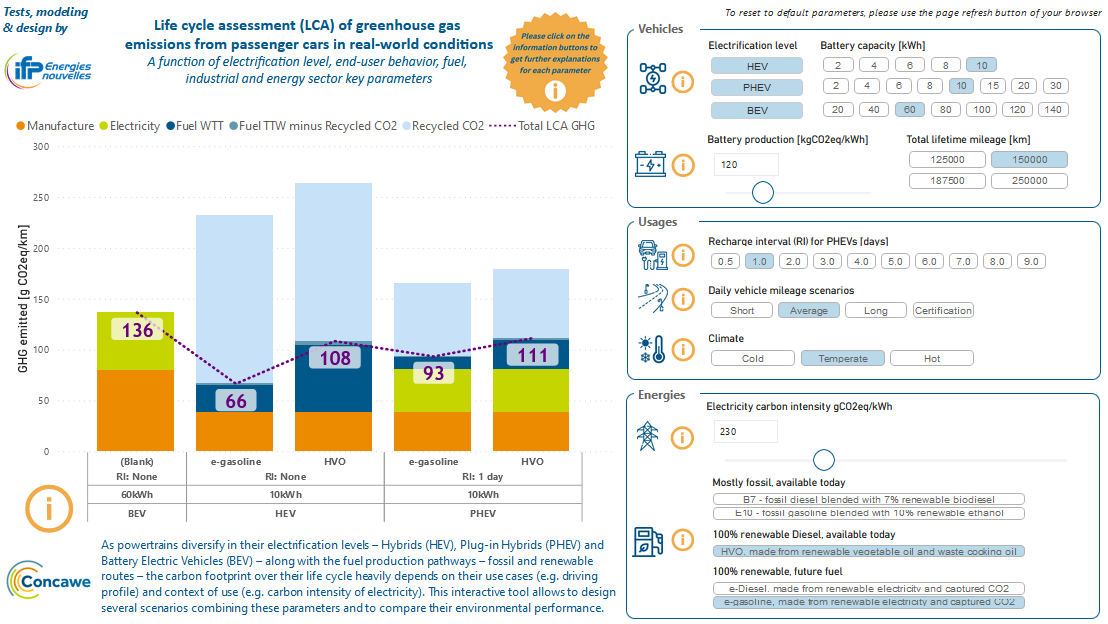The importance of carbon cycle
Carbon is an essential element for all forms of life on Earth. Whether to help manufacture goods or release carbon as part of respiration, the intake and output of carbon is a component of all plant and animal life. To allow the phenomenon of combustion to happen, carbon is also required.
The carbon cycle can only be carbon neutral if this cycle is circular, which is the case with biogenic and captured CO2.
Biogenic CO2
Thanks to the photosynthesis process biomass captures the CO2, releases the O2 (oxygen) and keeps the carbon for its energy. No addition of carbon is therefore required for biofuels.
Captured CO2
For e-fuels, the principle is the same but the process is different: e-fuels are made from green electricity. The CO2 is directly captured from the air thanks to the Direct Air Capture (DAC) technology and added to the fuel.
- Capture of the CO2 by the biomass
- Transformation of the biomass to produce biofuels
- Use of biofuels in the internal combustion engine
- Release of the biogenic CO2 in the atmosphere
- Capture of the CO2 in the air
- Electrolysis with water and green electricity and addition of carbon
- Use of e-fuels in the internal combustion engine
- Release of the captured CO2 in the atmosphere
By using renewable fuels we do not increase CO2 into the atmosphere. For the combustion to happen we use carbon already present in the atmosphere (biogenic or captured). On the contrary by using fossil fuels we add CO2 to the atmosphere.

Is it the end of the internal combustion engine?
No, it is not the end of the internal combustion engine. The internal combustion engine has transformed modern society by enabling a thriving transport sector and by boosting economic activity. By embracing renewable fuels, we can keep the benefits of the internal combustion engine without any impact on climate simply by closing the carbon cycle thanks to the use of recycled carbon.
No need to change your car: just change your fuel!
What is a life-cycle analysis and why is it important?
To understand the definition of a zero-emission vehicle, it is important to understand how vehicle emissions are measured in the EU. In fact, CO2 emissions are only measured at the tailpipe. This means that the only emissions that are accounted for are those generated when using the vehicle. As a result, for electric or hydrogen cars, as there is no tailpipe, no emissions are effectively measured and these vehicles are thus labelled as zero-emission vehicles and seem to be the obvious choice.
What about emissions from the manufacturing of the vehicle and the battery or the fuel cells, the production of the energy or the recycling of the vehicle? These emissions are not measured and accounted for, making them invisible.
From a climate perspective, it does not matter whether the greenhouse gases are emitted during the production of the car or of the energy carrier, or at the tailpipe. All these emissions count. Therefore, only a life-cycle assessment matters, considering the overall scope of emissions occurring during the production of the vehicle, the production of its energy and its use.
If we consider that these important elements are put aside, it appears that the definition of a zero-emission vehicle in existing regulations is not a fair representation of the reality.
Cars CO2 Comparator
This tool, based on third party studies, shows the life-cycle assessment of greenhouse gas emissions from cars in real-world conditions. As powertrains diversify in their electrification levels – hybrids, plug-in hybrids and battery electric vehicles – along with the fuel production pathways – fossil and renewable fuels –. The carbon footprint of vehicles over their life-cycle heavily depends on their use cases (e.g. driving profile) and context of use (e.g. carbon intensity of electricity). This interactive tool developed by IFPEN and commissioned by Concawe allows to design several scenarios combining these parameters and to compare their environmental performance.
This comparator allows us to understand there is not such a thing as zero emissions if emissions are calculated properly – over the full life-cycle of the car.
HDV CO2 Comparator
As powertrains diversify in their electrification levels – hybrids, plug-in hybrids, battery electric vehicles, and fuel cell electric vehicles – along with the fuel production pathways – fossil and renewable routes – the carbon footprint over their life-cycle heavily depends on their use cases (e.g. driving profile) and context of use (e.g. carbon intensity of electricity). This interactive tool developed by IFPEN and commissioned by Concawe allows to design several scenarios combining these parameters and to compare their environmental performance.

